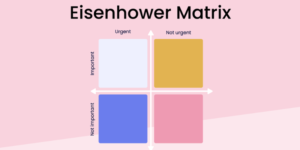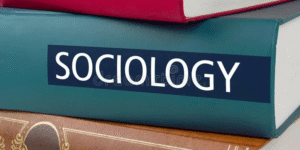In an age of digital saturation and perpetual connectivity, silence has become rare and often undervalued. Yet, silence is not simply the absence of sound but a deliberate practice of focus, reflection, and clarity. It plays a transformative role in personal and professional growth, enabling individuals and organisations to cut through distractions, prioritise purpose, and sustain long-term productivity. Using insights from psychological research, organisational studies, and case examples—this article explores the essential role of silence in career growth.
Silence as a Foundation for Growth
Silence is frequently misinterpreted as passivity. However, cognitive research demonstrates that quiet environments improve memory, creativity, and deep focus (Beaman et al., 2005). Newport (2016) argues that “deep work”—the ability to focus without distraction—is the single most valuable skill in the modern economy. Similarly, Arum (2025) reframes silence as a productive cognitive-affective tool, especially within learning and professional development contexts.
In practice, organisations like London Healthcare Locums leverage silence by creating distraction-free environments where recruiters can engage deeply with complex workforce demands. In fast-moving industries such as healthcare recruitment, uninterrupted time is essential for matching medical professionals to roles efficiently and accurately.
Eliminating Distractions: Cutting Out the Noise
To harness the power of silence, individuals and organisations must first identify and reduce distractions:
- Digital Detox and Smartphones
Research shows that even the mere presence of a smartphone reduces working memory and concentration (Ward et al., 2017). Newport (2019) advocates for digital minimalism as a strategy to reclaim attention. For professionals, especially in recruitment industries, “Do Not Disturb” modes during critical decision-making tasks can improve placement accuracy and speed. - Streamlining Meetings
Excessive meetings have been criticised as time drains. Harvard Business Review (2017) reports that employees waste up to 31 hours monthly in unnecessary meetings. Instead, clear agendas and meeting-free days (Perlow, 2012) help foster focused work cultures. - Social Media Reduction
Kuss and Griffiths (2017) highlight how excessive social media use correlates with reduced attention spans and stress. For London Healthcare Locums, reducing digital distractions enables recruiters to focus on long-term client relationships rather than being sidetracked by transient online trends. - Filtering Opportunities
Kaplan and Norton (2004) suggest that organisations must align opportunities with strategic goals. By saying “no” to misaligned ventures, companies like London Healthcare Locums ensure sustainable growth rather than short-term wins.
Prioritisation Through Silence
Silence alone is insufficient—it must be paired with purposeful action.
- Early Mornings and Quiet Hours
Sharma (2018) argues that mornings are optimal for strategic reflection and planning. In practice, leaders at London Healthcare Locums often use quiet mornings to outline recruitment strategies before the influx of client requests begins. - Time Blocking and Deep Work
Newport (2016) emphasises dedicated time blocks for cognitively demanding tasks. Baumeister and Tierney (2011) add that structured focus reduces decision fatigue, preventing burnout. - Movement and Reflection
Physical activity boosts creativity. Oppezzo and Schwartz (2014) found walking increases creative output by 60%. Simple acts such as walking between client meetings provide professionals with silent space to generate innovative solutions. - Collaboration and Documentation
Edmondson (1999) stresses that silence is complementary to psychological safety. Professionals must balance silent focus with open communication. At London Healthcare Locums, recruiters document insights and share them during structured meetings to ensure collective learning. - Mission Alignment
Sinek (2009) argues that clarity of purpose drives resilience. Organisations rooted in mission-driven work, such as London Healthcare Locums, find that silence fosters alignment with their core vision of healthcare efficiency.
The Psychological Benefits of Silence
Silence enhances not only productivity but also well-being. Bernardi et al. (2006) discovered that two minutes of silence lowered stress levels more effectively than relaxing music. Kabat-Zinn (1990) introduced mindfulness as a practice where silence enables individuals to process stress constructively.
Modern studies affirm this. Ahmar and Azzajjad (2025) show that silent observation fosters reflective practice and long-term professional growth. Similarly, Joseph et al. (2025) discuss the role of silence in digital contexts, noting its power to resist overwhelming informational noise. For healthcare recruiters, where high stress is common, silence aids in better decision-making and improved job satisfaction.
Embedding Silence into Organisational Culture
For silence to become an organisational asset, it must be intentionally integrated into culture:
- Flexible Working
Gajendran and Harrison (2007) found that remote and flexible work enhances concentration by reducing environmental distractions. Quiet workspaces allow professionals to focus deeply on tasks. - No-Meeting Days
Perlow (2012) illustrates that companies implementing “quiet days” see measurable gains in productivity. This policy allows recruiters at London Healthcare Locums to dedicate time solely to placements and strategic analysis. - Digital Minimalism
Newport (2019) emphasises educating employees on mindful technology use. By cultivating digital discipline, organisations empower staff to concentrate on impactful tasks rather than constant notifications. - Structured Reflection
Recent research highlights the role of silence in professional development. For example, Khikmatillaeva (2025) identifies a “quiet revolution” in small firms leveraging automation with silence and focus to increase productivity. This shows the relevance of silence not only for individuals but also at the organisational level.
In an increasingly noisy world, silence is a competitive advantage. It cultivates clarity, focus, and resilience—qualities essential for both personal growth and organisational success. By eliminating distractions, prioritising deep work, and embedding silence into workplace culture, professionals can foster environments where sustained development thrives.
For organisations like London Healthcare Locums, silence is not emptiness but a deliberate practice of focus that translates into better recruitment outcomes and stronger mission-driven impact. As professional landscapes grow more complex, the challenge remains: how will individuals and organisations protect their silence to fuel growth?
References
Ahmar, D.S. & Azzajjad, M.F. (2025) ‘Reimagining madrasah education management: Critical and sustainable strategies’, Tadibia Islamika. Available at: https://e-journal.uingusdur.ac.id/tadibia/article/download/10647/2711 (Accessed: 17 September 2025).
Arum, Y.P. (2025) ‘Implementing Silence Pedagogy in English Language Teaching’, Proceedings of the World Conference on Foreign Language Education. Available at: https://proudpen.com/proceedings/index.php/WORLDFLE/article/view/745 (Accessed: 17 September 2025).
Baumeister, R.F. & Tierney, J. (2011) Willpower: Rediscovering the Greatest Human Strength. New York: Penguin.
Beaman, C.P., Bridges, A.M. & Scott, S.K. (2005) ‘Auditory distraction and memory recall’, Cognitive Brain Research, 22(3), pp. 434–445.
Bernardi, L., Porta, C. & Sleight, P. (2006) ‘Cardiovascular changes and the importance of silence’, Heart, 92(4), pp. 445–452.
Edmondson, A.C. (1999) ‘Psychological safety and learning behaviour in work teams’, Administrative Science Quarterly, 44(2), pp. 350–383.
Gajendran, R.S. & Harrison, D.A. (2007) ‘The good, the bad, and the unknown about telecommuting’, Journal of Applied Psychology, 92(6), pp. 1524–1541.
Harvard Business Review (2017) ‘Stop the Meeting Madness’. Available at: https://hbr.org/2017/07/stop-the-meeting-madness (Accessed: 4 February 2025).
Joseph, J., Babu, D.R. & Rajasekar, F.V. (2025) ‘Digital silence and academic freedom’, Frontiers in Communication. Available at: https://www.frontiersin.org/journals/communication/articles/10.3389/fcomm.2025.1640244 (Accessed: 17 September 2025).
Kabat-Zinn, J. (1990) Full Catastrophe Living. New York: Delacorte.
Kaplan, R.S. & Norton, D.P. (2004) Strategy Maps. Boston: Harvard Business School Press.
Khikmatillaeva, M. (2025) ‘From case files to code: how legal automation empowers productivity’, American Journal of Education and Learning. Available at: https://advancedscienti.com/index.php/AJEL/article/view/2108 (Accessed: 17 September 2025).
Kuss, D.J. & Griffiths, M.D. (2017) ‘Social networking sites and addiction’, Computers in Human Behavior, 68, pp. 132–140.
Newport, C. (2016) Deep Work. New York: Grand Central.
Newport, C. (2019) Digital Minimalism. London: Penguin.
Oppezzo, M. & Schwartz, D.L. (2014) ‘Give your ideas some legs’, Journal of Experimental Psychology: Learning, Memory, and Cognition, 40(4), pp. 1142–1152.
Perlow, L.A. (2012) Sleeping with Your Smartphone: How to Break the 24/7 Habit. Boston: Harvard Business Review Press.
Sharma, R. (2018) The 5 AM Club. London: HarperCollins.
Sinek, S. (2009) Start With Why. London: Penguin.
Ward, A.F., Duke, K., Gneezy, A. & Bos, M.W. (2017) ‘Brain drain: Smartphone presence reduces cognitive capacity’, Journal of the Association for Consumer Research, 2(2), pp. 140–154.









